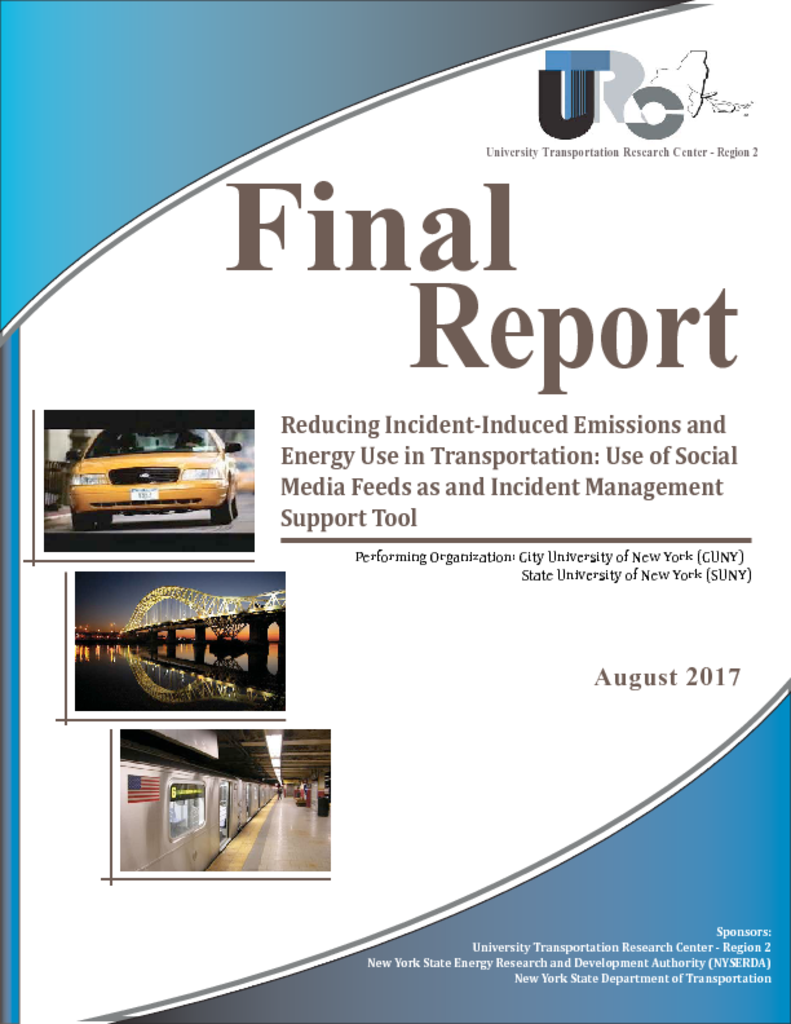Ubiquitous connected devices and microblogging platforms, such as Twitter, are providing a huge amount user-generated information that has a great potential for applications in transportation incident management (TIM) with minimal infrastructure required. In this study publicly posted Twitter posts were gathered using relevant keywords. While organizational Twitter accounts (e.g., DOT, news outlets) disseminate traffic information after an incident is reported and confirmed, tweets of personal accounts are more likely to contain previously unreported traffic information, and therefore are particularly valuable for TIM. A variety of information such as location, time, severity, extent of damage, presence of debris, and evolution of congestion can be extracted from the Twitter’s text. Such information is especially useful for TIM as the traditional sources for gathering traffic information, such as loop detectors and sensors, are expensive to construct and maintain for local and rural roads.




